WINIA Electronics 7NF1PMO1000 Microwave Oven User Manual
Dongbu Daewoo Electronics Corporation Microwave Oven
Contents
- 1. User Manual
- 2. Users Manual
User Manual
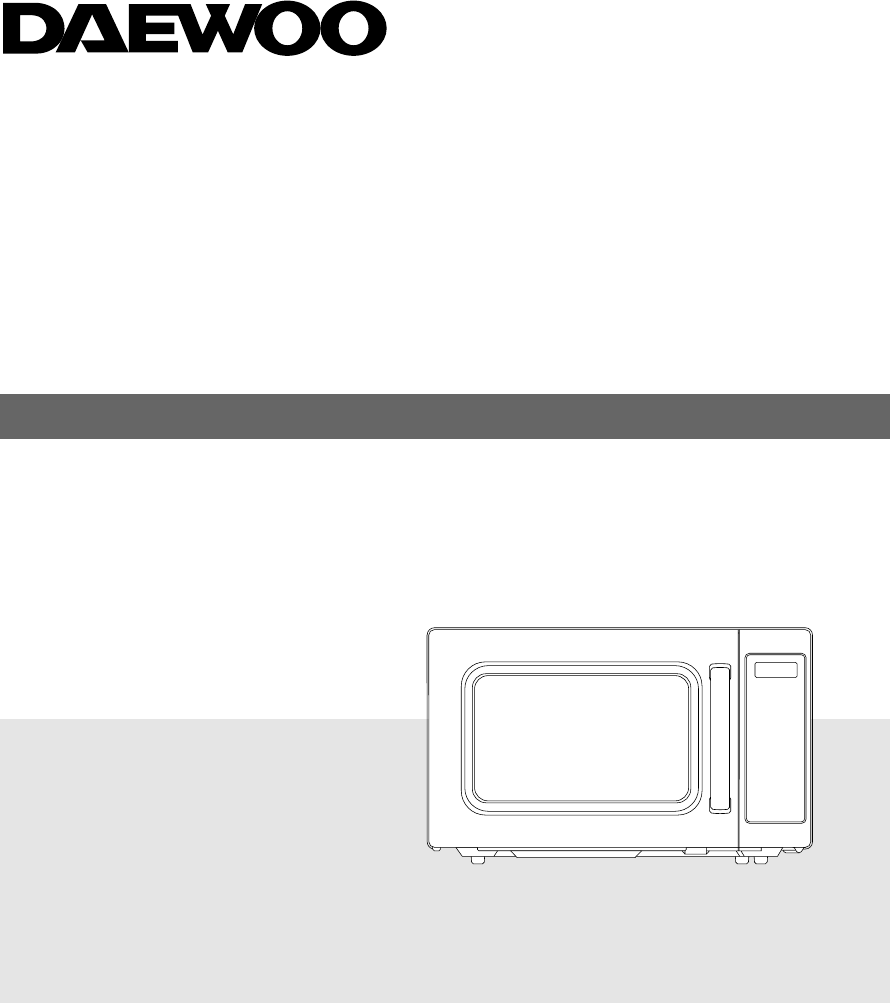
Before operating this oven, please read these instructions completely.
OPERATING
INSTRUCTIONS
MICROWAVE OVEN
KOR-1P5C9

1
PRECAUTIONS TO AVOID POSSIBLE EXPOSURE
TO EXCESSIVE MICROWAVE ENERGY
(a) Do not attempt to operate this oven with the door open since open-door operation can result in
harmful exposure to microwave energy. It is important not to defeat or tamper with the safety interlocks.
(b) Do not place any object between the oven front face and the door or allow soil or cleaner residue to
accumulate on sealing surfaces.
(c) Do not operate the oven if it is damaged. It is particularly important that the oven door close
properly and that there is no damage to the: (1) door (bent), (2) hinges and latches (broken or
loosened), (3) door seals and sealing surfaces.
(d) The oven should not be adjusted or repaired by anyone except properly qualified service personnel.
TABLE OF CONTENTS
PRECAUTIONS TO AVOID POSSIBLE EXPOSURE TO
EXCESSIVE MICROWAVE ENERGY ................................................................................................................ 1
TABLE OF CONTENTS ...................................................................................................................................... 1
IMPORTANT SAFETY INSTRUCTION............................................................................................................... 2
FEDERAL COMMUNICATIONS COMMISSION RADIO FREQUENCY
INTERFERENCE STATEMENT.......................................................................................................................... 3
GROUNDING INSTRUCTIONS.......................................................................................................................... 3
INSTALLATION................................................................................................................................................... 4
SPECIFICATIONS .............................................................................................................................................. 5
FEATURES DIAGRAM ....................................................................................................................................... 6
OPERATION PROCEDURE ............................................................................................................................... 8
CONTROLS ........................................................................................................................................................ 9
TIME DEFROSTING...................................................................................................................................... 9
COOKING IN ONE STAGE ......................................................................................................................... 10
MEMORY FUNCTION................................................................................................................................. 11
+30 SEC ...................................................................................................................................................... 12
CHECK FUNCTION..................................................................................................................................... 12
DOUBLE QUANTITY FUNCTION ............................................................................................................... 12
CHILD SAFETY LOCK ................................................................................................................................13
POWER SAVE MODE................................................................................................................................. 13
MUTE FUNCTION....................................................................................................................................... 13
TO STOP THE OVEN WHILE THE OVEN IS OPERATING ....................................................................... 13
COOKING INSTRUCTION................................................................................................................................14
COOKING UTENSILS....................................................................................................................................... 14
MICROWAVING PRINCIPLES ......................................................................................................................... 15
HOW MICROWAVES COOK FOOD................................................................................................................. 15
COOKING TECHNIQUES................................................................................................................................. 16
DEFROSTING GUIDE ...................................................................................................................................... 17
DEFROSTING CHART ..................................................................................................................................... 18
COOKING CHART............................................................................................................................................ 19
REHEATING CHART........................................................................................................................................ 20
CARE OF YOUR MICROWAVE OVEN ............................................................................................................ 22
USE YOUR MICROWAVE OVEN SAFELY...................................................................................................... 23
BEFORE YOU CALL FOR SERVICE ............................................................................................................... 24
QUESTIONS AND ANSWERS ......................................................................................................................... 24
WARRANTY.......................................................................................................................................................26

2
IMPORTANT SAFETY INSTRUCTIONS
When using electrical appliances, basic safety precautions should be followed, including the following:
WARNING - To reduce the risk of burns, electric shock, fire, injury to persons or exposure to excessive
microwave energy:
SAVE THESE INSTRUCTIONS
11. Read all instructions before using the appliance.
12. Read and follow the specific “PRECAUTIONS TO
AVOID POSSIBLE EXPOSURE TO EXCESSIVE
MICROWAVE ENERGY” found on page 1.
13. This appliance must be grounded. Connect
only to properly grounded outlet.
See “GROUNDING INSTRUCTIONS” found on page 3.
14. Install or locate this appliance only in accor-
dance with the provided installation instructions.
15. Some products such as whole eggs and
sealed containers - for example, closed glass
jars-are able to explode and should not be heated
in this oven.
16.
Use this appliance only for its intended use
as described in this manual. Do not use corrosive chemicals or
vapors in this appliance. This type of oven is specifically
designed to heat, cook, or dry food. It is not designed for
industrial or laboratory use.
17. As with any appliance, close supervision is
necessary when used by children.
18. Do not operate this appliance if it has a
damaged cord or plug, if it is not working
properly, or if it has been damaged or dropped.
19. This appliance should be serviced only by
qualified service personnel.
Contact nearest authorized service facility
for examination, repair or adjustment.
10. Do not cover or block any openings on the
appliance.
11. Do not store this appliance outdoors. Do not use this
product near water — for example, near a kitchen sink,
in a wet basement, or near a swimming pool, or similar
locations.
12. Do not immerse cord or plug in water.
13. Keep cord away from heated surfaces.
14. Do not let cord hang over edge of table or
counter.
15. Either:
a) When cleaning surfaces of door and oven that
comes together on closing the door, use only mild,
non-abrasive soaps or detergents applied with a
sponge or soft cloth , or
b) When separate cleaning instructions are provided,
See door surface cleaning instructions on.
16. To reduce the risk of fire in the oven cavity:
a) Do not overcook food. Carefully attend appliance
when paper, plastic, or other com-bustible materials
are placed inside the
oven to facilitate cooking.
b) Remove wire twist-ties from paper or plastic bags
before placing bag in oven.
c) If materials inside the oven ignite, keep oven door
closed, turn oven off, and disconnect the power cord,
or shut off power at the fuse or circuit breaker panel.
d) Do not use the cavity for storage purposes. Do not
leave paper products, cooking utensils, or food in the
cavity when not in use.
17. Do not use this microwave oven to heat corrosive
chemicals (for example, sulfides and chlorides). Vapours
from such corrosive chemicals may interact with the
contact and springs of the safety interlock switches
thereby rendering them inoperable.
18. Keep the waveguide cover clean at all times.
Wipe the oven interior with a soft damp cloth
after each use. If you leave grease or fat
anywhere in the cavity it may overheat,
smoke or even catch fire when next using
the oven.
19. Never heat oil or fat for deep frying as you
cannot control the temperature and doing so
may lead to overheating and fire.
20. Liquids, such as water, coffee, or tea are able to be
overheated beyond the boiling point without appearing
to be boiling due to surface tension of the liquid. Visible
bubbling or boiling when the container is removed from
the microwave oven is not always present. THIS
COULD RESULT IN VERY HOT LIQUIDS SUDDENLY
BOILING OVER WHEN A SPOON OR OTHER
UTENSIL IS INSERTED INTO THE LIQUID. To reduce
the risk of injury to persons:
1Do not overheat the liquid.
2Stir the liquid both before and halfway through heating it
3Do not use straight-sided containers with narrow necks.
4After heating, allow the container to stand in the microwave
oven for a short time before removing the container.
5Use extreme care when inserting a spoon or other utensil
into the container.

3
FEDERAL COMMUNICATIONS COMMISSION
RADIO FREQUENCY INTERFERENCE
STATEMENT
WARNING:
This equipment generates and uses ISM frequency energy and if not installed and used properly, that is in
strict accordance with the manufacturer's instructions, may cause interference to radio and television
reception.
It has been type-tested and found to comply with limits for an ISM Equipment pursuant to part 18 of FCC
Rules, which are designed to provide reasonable protection against such interference in a residential
installation.
However, there is no guarantee that interference will not occur in a particular installation.
If this equipment does cause interference to radio or television reception, which can be determined by
turning the equipment off and on, the user is encouraged to try to correct the interference by one or more
of the followings.
• Reorient the receiving antenna of radio or television.
• Relocate the Microwave oven with respect to the receiver.
• Move the microwave oven away from the receiver.
• Plug the microwave oven into a different outlet so that microwave oven and receiver are on
different branch circuits.
THE MANUFACTURER is not responsible for any radio or TV interference caused by
UNAUTHORIZED MODIFICATION to this microwave oven. It is the responsibility of
the user to correct such interference.
GROUNDING INSTRUCTIONS
This appliance must be grounded. In the event of an electrical short circuit, the grounding plug reduces the risk
of electric shock by providing an escape wire for electric current. This appliance is equipped with a cord having
a grounding wire with a grounding plug. The plug must be plugged into an outlet that is properly installed and
grounded.
WARNING:
Improper use of the grounding can result in a risk of electric shock.
Consult a qualified electrician or serviceman if the grounding instructions are not completely understood,
or if doubt exists as to whether the appliance is properly grounded.
• Do not use an extension cord, if the power supply cord is too short, have a qualified electrician or
serviceman install a three slot receptacle. This oven should be plugged into a seperate 60 hertz circuit
with the electrical rating. When a microwave oven is on a circuit with other equipment, an increase in
cooking times may be required and fuses can be blown.
WARNING:
Do not cut or remove the third (ground) prong from the power cord under any circumstances.
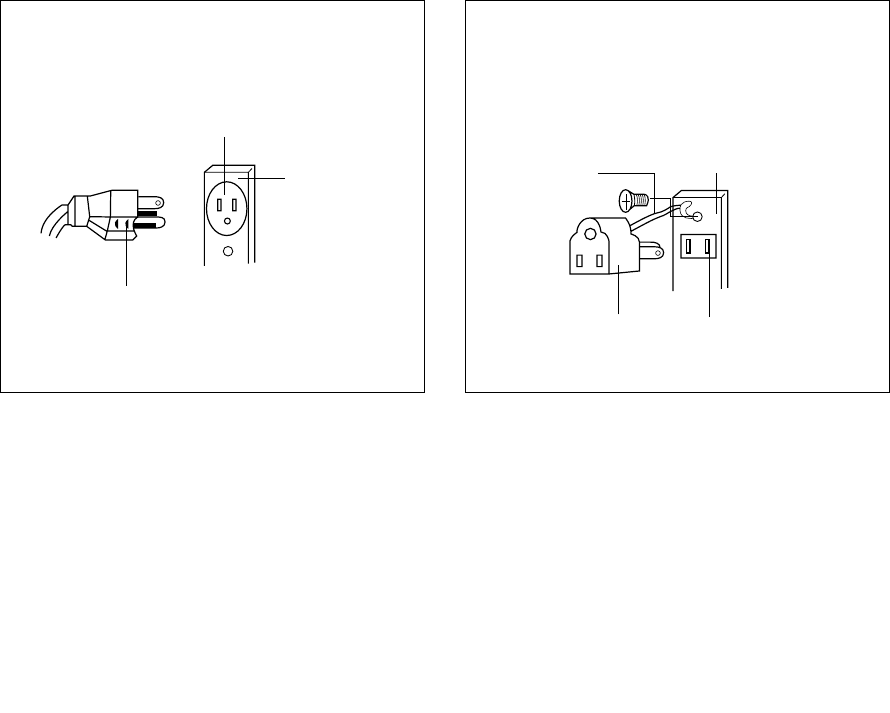
4
INSTALLATION
1Examine the oven after unpacking. Check for damage such as a misaligned door, broken door or dent in
the cavity.
If any damage is visible, DO NOT INSTALL, and notify your dealer immediately.
2Level, flat location. Install the microwave oven on a level, flat surface.
3Ventilation. Do not block air vents. If they are blocked during operation, the oven may overheat and
eventually cause a failure. For proper ventilation, allow 4 inches of space between oven top, sides, rear and
adjacent surfaces.
4Away from radio and TV sets. Poor television reception and radio interference may result if the oven is
located close to a TV, radio, antenna, feeder, etc. Place the oven as far from them as possible.
5Away from heating appliances and water taps. Keep the oven away from heat, steam or splashing
liquids. These things can adversely affect oven wiring and contacts.
6Power supply. This microwave oven requires a power supply of approximately 14.5 Amperes, 120 Volts,
60Hz and a grounded outlet. A short power cord is provided to reduce the risk of the user becoming
entangled in or tripping over a longer cord.
7The minimum height of free space necessary above the top surface of the oven is 4inch.
When use 3-pronged plug When use grounding adaptor, make sure
the receptacle box is fully grounded.
3-prong Receptacle
Receptacle
Box cover
3-prong plug
Receptacle Box Cover
Grounding
Lead
Grounding
Adapter Receptacle
“THE CANADIAN ELECTRICAL CODE DOES NOT ALLOW THE USE OF THE GROUNDING ADAPTOR”
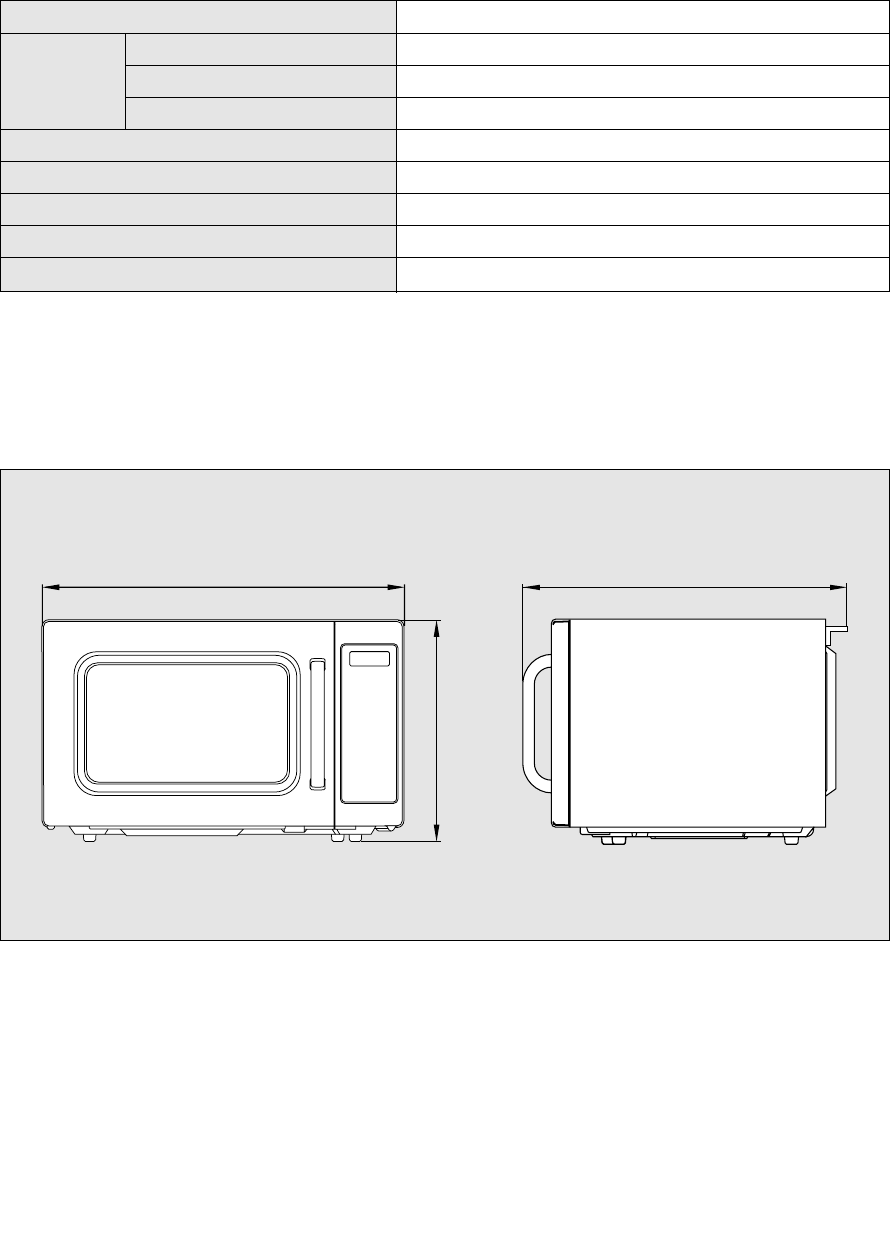
5
SPECIFICATIONS
POWER SUPPLY 120V AC 60 Hz SINGLE PHASE WITH GROUNDING
POWER CONSUMPTION 1500W
MICROWAVE OUTPUT POWER 1000W
FREQUENCY 2450 MHZ
OUTSIDE DIMENSIONS (WXHXD) 560X344X479 mm ( 22.0X13.5X18.9 in. )
CAVITY DIMENSIONS (WXHXD) 369X221X400 mm ( 14.5X8.7X15.7 in. )
NET WEIGHT APPROX. 18.5 Kg ( 40.8 lbs. )
TIMER 60 min.
POWER SELECTIONS 5 LEVELS
* Specifications are subject to change without notice.
560 479
344
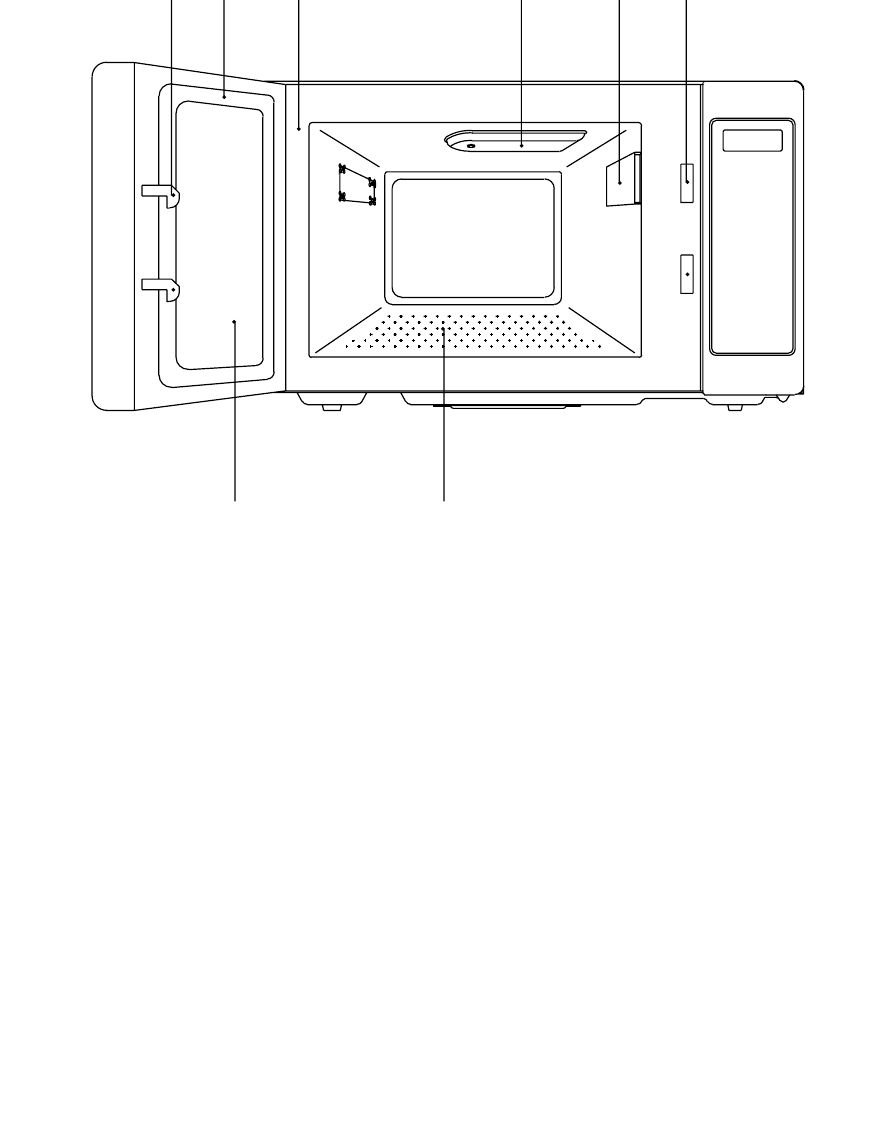
6
FEATURES DIAGRAM
1Safety Interlock System.
2Door Viewing Screen - Allows viewing of food.
The screen is designed so that light can pass
through, but not the microwave.
3Door Hook - When door is closed, it will
automatically shut off. If the door is opened
while the oven is operating, magnetron will
immediately stop operating.
4Oven Cavity.
5Door Seal - Door seal maintains the microwave
energy within the oven cavity and prevents
microwave leakage.
6Plate Tray - Made of special heat resistant
ceramic. Food in a proper receptacle is placed
on this plate for cooking.
7Stirrer Cover - This is located on the ceiling
with the stirrer fan.
8Inlet cover - Protect the air hole from splashes
of cooking foods.
35
26
4781
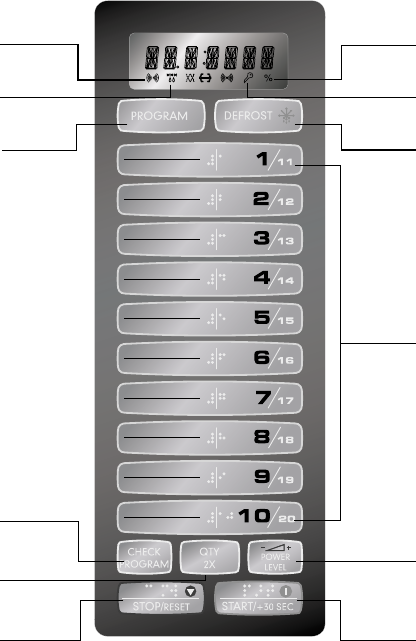
7
9MICROWAVE indicator, showing microwaving in
progress.
0DEFROST indicator, showing defrosting in
progress.
qPERCENTAGE of power indicator.
wCHILD LOCK indicator.
ePROGRAM - Used to save cooking data.
rDEFROST - Used to defrost foods for time.
tTIME SET PAD - Used to set the cooking time.
yCHECK PROGRAM - Used to check cooking data.
uDOUBLE QUANTITY - Used to extend
programmed cooking time.
iPOWER LEVEL - Used to set power level.
oSTOP/RESET - Used to stop the oven operation or
to delete the cooking data.
pSTART /+30 SEC - Used to start the oven and also
used to set a reheat time.
FEATURES DIAGRAM (continued)
q
w
r
t
i
p
9
0
e
y
u
o
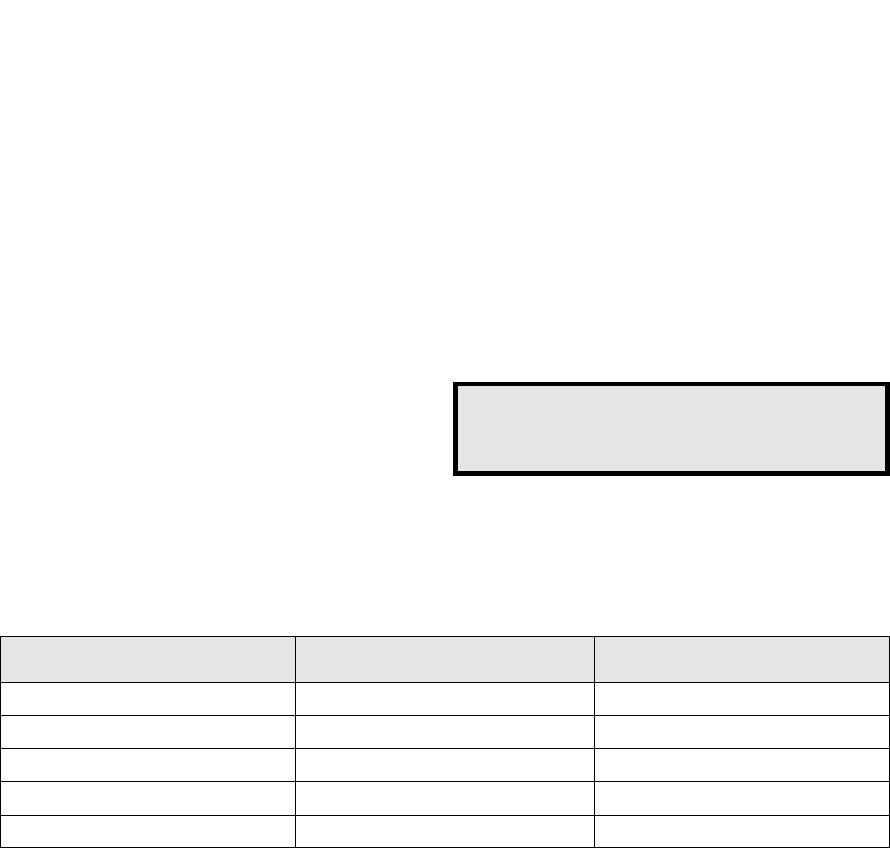
8
The oven light is on when the microwave oven
is operating or the door is opened.
The oven door can be opened at any time
during operation by opening the door. The oven
will automatically shut off.
Each time a pad is touched, a BEEP will sound
to acknowledge the touch.
The oven automatically cooks on full power
unless set to a lower power level.
The display will show ":0" when the oven is
plugged in.
When the STOP/RESET pad is touched during
the oven operation, the oven stops cooking and
all information retained.
To erase all information, touch the STOP/RESET
pad once more. If the oven door is opened during
the oven operation, all information is retained.
If the START pad is touched and the oven does
not operate, check the area between the door
and door seal for obstructions and make sure the
door is closed securely.
The oven will not start cooking until the door is
completely closed or the program has been
reset.
OPERATION PROCEDURE
This section includes useful information about oven operation.
1. Plug power supply cord into a standard 3- pronged 15 Amp, 120V AC 60Hz power outlet.
2. After placing the food in a suitable container, open the oven door and put it on the glass tray.
The glass tray and roller guide must always be in place during cooking.
3. Shut the door. Make sure that it is firmly closed.
1
2
3
4
5
6
7
Make sure the oven is properly installed and
plugged into the electrical outlet.
WATTAGE OUTPUT CHART
• The power-level is set by touching the POWER pad. The chart shows the display, the power level and
the percentage of power.
Touch POWER pad Power Level (Display) Approximate Percentage of Power
once 100 100%
twice 80 80%
3 times 60 60%
4 times 40 40%
5 times 20 20%
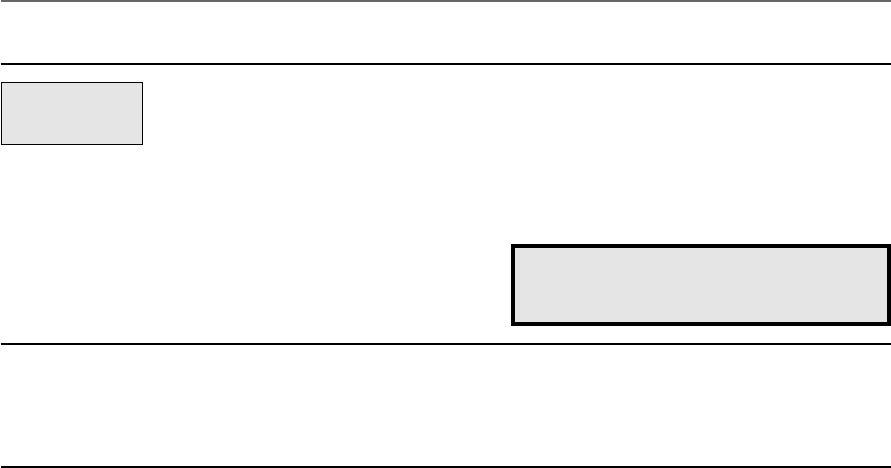
9
CONTROLS
TIME DEFROSTING
When DEFROST is selected, the automatic cycle divides the defrosting time into periods of
alternating defrost and stand times by cycling on and off.
When you touch START pad, the DEFROST indicator lights to show the oven is in the DEFROST mode.
The display counts down the time to show you how much defrosting time is left in the DEFROST mode.
The oven beeps during the defrosting cycle to signal that the food needs to be turned or rearranged. When
the defrosting time ends, you will hear 3 beeps.
1. Touch DEFROST pad.
2. Touch number pads for the
desired defrosting time.
3. Touch START pad.
The DEFROST indicator lights and " : 0" is
displayed.
The display will show the numbers you
pressed in the order you touched.
DEFROST
NOTE:
Your oven can be programmed for
60 minutes.(60:00)
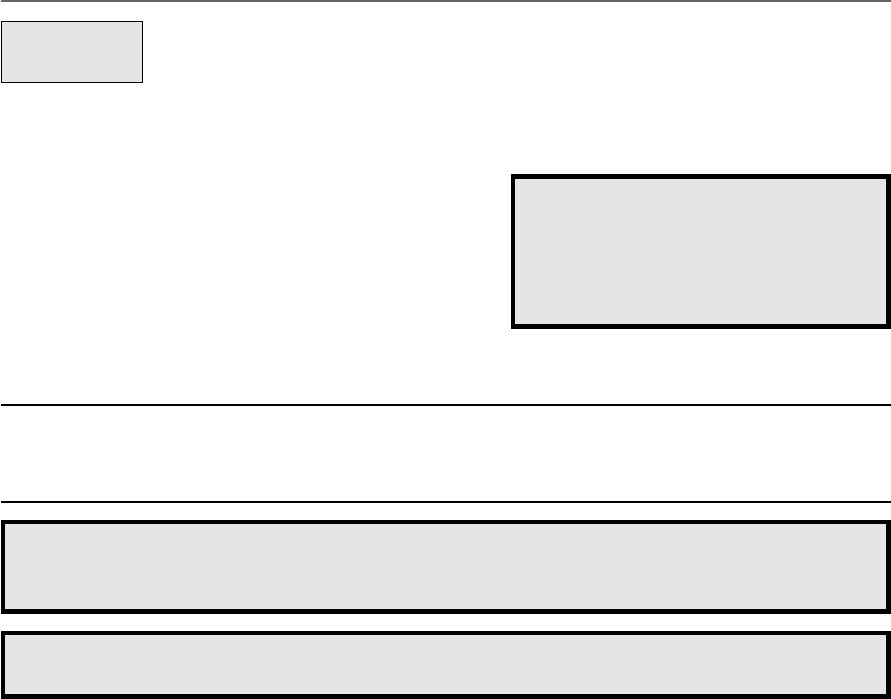
10
COOKING IN ONE STAGE
When you touch START pad, the MICROWAVE indicator lights to show the oven is cooking.
The display counts down the time to show how much cooking time is left. When the cooking time ends, you
will hear 3 beeps.
1. Touch POWER LEVEL pad.
(Select desired power level.)
2. Touch the number pads for the
cooking time.
3. Touch START pad.
x3 The MICROWAVE and % indicators light.
The display will show what you touched.
This example shows power level 60.
The display will show the numbers you
pressed in the order you touched.
NOTE: Using lower power levels increases the cooking time which is recommended for foods such
as cheese, milk and slow cooking of meats.
NOTE: The cooling fan may operate to prevent the oven being overheated.
NOTE: Your oven can be programmed
for 60 minutes. (60:00)
but, in case of full power(100%),
maximum time is 20 minutes.
(20:00)
POWER
LEVEL
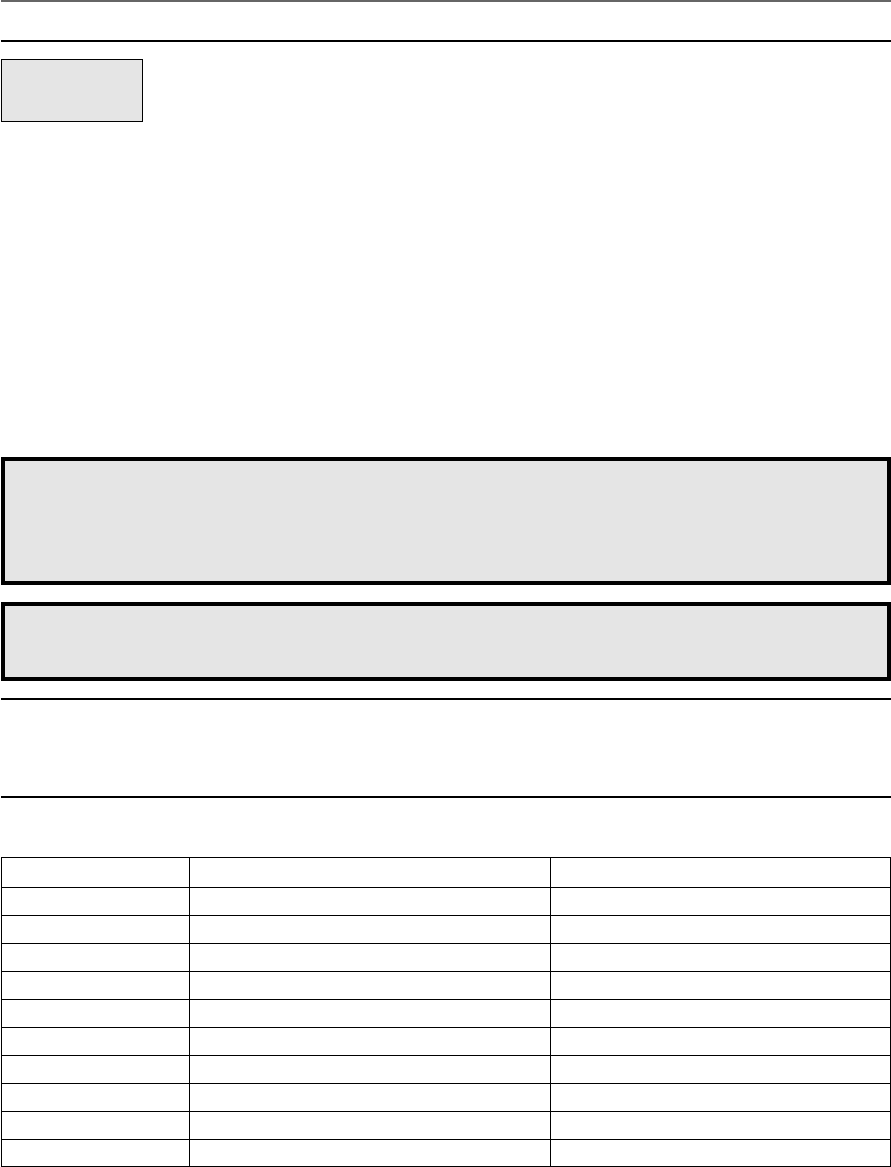
11
MEMORY FUNCTION
This microwave oven has 20 programmable pads (1~20).
After programming is finished, just touch the NUMBER pad of the memory number you want to select.
Then the oven will automatically start heating according to the pre-programmed cooking time and power
level.
* Preprogrammed Cooking Times and Power Level
Pad Cooking Time Power Level
1 10 sec. 100 %
2 20 sec. 100 %
3 30 sec. 100 %
4 45 sec. 100 %
5 1 min. 100 %
6 1 min. 30 sec. 100 %
7 2 min. 100 %
8 3 min. 100 %
9 4 min. 100 %
10 5 min. 100 %
1. Touch PROGRAM pad.
2. Touch the number pads. ex)5
3. Touch POWER LEVEL pad.
(Select desired power level.)
4. Touch the NUMBER pads for
cooking time.
5. Touch START pad to save
cooking time and power level.
6. Touch STOP/RESET pad.
The display will show “PROGRAM”.
The display will show “PROG-05”.
The MICROWAVE and % indicators light.
The display will show what you touched.
The display will show “STAGE-2” and long
beep sounds.
When you touch STOP/RESET pad,
MEMORY function ends.
PROGRAM
NOTE 1: If you want cooking in two or three stage, repeat step 3~5 once or twice, and display will
show “STAGE-2” or “STAGE-3”.
After touching START pad to save cooking time and power level in 3-stage, you can see
“ - END - ” on the display.
NOTE 2: In case of original set, number 1~10 is programmed but cooking data is changeable later.
And number 11~20 is not programmed, so you will save cooking data.

12
+30 SEC
+30 SEC allows you to reheat for 30 seconds at 100% (full power) by simply touching the +30 SEC
pad.
By repeatedly touching the +30 SEC pad, you can also extend reheating time to 5 minutes by 30
second increments.
1. Touch +30 SEC pad. When you touch +30 SEC, ":30" is
displayed.
The oven will start immediately. It will add 30
seconds to the time counting down each time
the pad is touched.
CHECK FUNCTION
This feature allows you to check the programmed cooking time and power level.
CHECK
PROGRAM
+30 SEC
The display will show “CHECK”.
The display will show “PROG-05”.
1. Touch CHECK PROGRAM pad.
2. Touch the NUMBER pads which
you want confirmation. ex)5
The display will show cooking time, power level each stage.
If you want to end, touch STOP/RESET pad.
DOUBLE QUANTITY FUNCTION
This feature allows you to extend programmed cooking time twice temporarily.
But, the extended cooking time can’t exceed maximum cooking time.
Maximum cooking time of this oven is 60 minutes except full power.
In case of full power (100%), maximum cooking time is 20 minutes.
QTY 2X The display will show “DOUBLE”.
The display will show “PROG-05”.
After 1.5 seconds, the oven automatically
start cooking.
1. Touch QTY 2X pad.
2. Touch the NUMBER pads
which is programmed. ex)5

13
CHILD SAFETY LOCK
The safety lock prevents unwanted oven operation such as by small children.
To set, press and hold STOP/RESET for 3 seconds, LOCK indicator lights.
To cancel, press and hold STOP/RESET for 3 seconds, LOCK indicator goes off.
POWER SAVE MODE
This function is used for saving energy.
To set, press and hold CHECK PROGRAM pad for 3 seconds. The oven will beep and nothing
appears in the display. Now the oven is in power save mode.
To operate the oven in power save mode, press any pad. Then “ : 0” will shown and the operation of
all function key will be same as in normal mode.
But, if there is no operation within 10 seconds in clear mode or while mainpulating the key, all the
contents of display will disappear.
To cancel, after press any pad, press and hold CHECK PROGRAM pad for 3 seconds.
Then the oven is again available for normal use.
MUTE FUNCTION
To set, press and hold QTY 2X pad for 3 seconds.
The display will show “MUTE” for 1 second.
Then you will not hear beeps, when you press any pad.
To cancel, press and hold QTY 2X pad for 3 seconds.
TO STOP THE OVEN WHILE THE OVEN IS OPERATING
1. Press STOP/RESET pad.
• You can restart the oven by touching START pad.
• Touch STOP/RESET once more to erase all instructions.
• You must enter in new instructions.
2. Open the door.
• You can restart the oven by closing the door and touching START.
NOTE: Oven stops operating when door is opened.

14
COOKING UTENSILS
Recommended Use
•Glass and glass-ceramic bowls and Dishes - Use for heating or cooking.
• Microwave browning dish - Use to brown the exterior of small items such as steaks, chops, or pancakes.
Follow the directions provided with you browning dish.
• Microwaveable plastic wrap - Use to retain steam. Leave a small opening for some steam to escape and
avoid placing it directly on the food.
• Wax paper - Use as a cover to prevent spattering.
• Paper towels, and napkins - Use for short term heating and covering; they absorb excess moisture and
prevent spattering. Do not use recycled paper towels, which may contain metal and can eatch fire.
• Thermometers - Use only those labeled “Microwave Safe” and follow all directions. Check the food in several
places. Conventional thermometers may be used once the food has been removed from the oven.
• Microwave cling film, microwave roasting bags - Microwave cling film and bags must be vented for steam
to escape, pierce in 4~5 places. Do not use plastic or metal ties as they may melt or catch fire due to electrical
‘arcing’.
Limited Use
• Aluminum foil - Do not use foil. Using foil can damage your oven.
• Ceramic, porcelain, and stoneware - Use these if they are labeled “Microwave Safe.” If they are not
labeled, test them to make sure they can be used safely. Never use dishes with metalic trim.
• Plastic - Use only if labeled “Microwave Safe.” Other plastics can melt.
• Thin plastic, paper, straw and wooden containers - Always attend the oven closely. Look at the oven from
time to time when cooking or reheating food in disposable containers of plastic, paper or other combustible
material. Only use for warming food. Pay special attention as over-heating may cause a fire in your oven.
Not Recommended
• Glass jars and bottles - Regular glass is too thin to be used in a microwave, and can shatter.
• Paper bags - These are a fire hazard, except for popcorn bags that are designed for microwave use.
• Styrofoam plates and cups - These can melt and leave an unhealthy residue on food.
• Plastic storage and food containers - Containers such as margarine tubs can melt in the microwave.
• Metal utensils - These can damage your oven. Remove all metal before cooking.
COOKING INSTRUCTIONS
Utensils should be checked to ensure that they are suitable for use in microwave ovens.
UTENSILS TEST
Place the utensil in question next to a glass measure filled with water, in the microwave oven. Microwave at
high power for 1-2 minutes. If the water heats up, but the utensil remains cool, the utensil is microwave-safe.
However if the utensil becomes warm, microwaves are being absorbed by the utensil and it should not be in the
microwave oven. You probably have many items on hand in your kitchen right now that can be used as cooking
equipment in your microwave oven. Read through the following checklist.
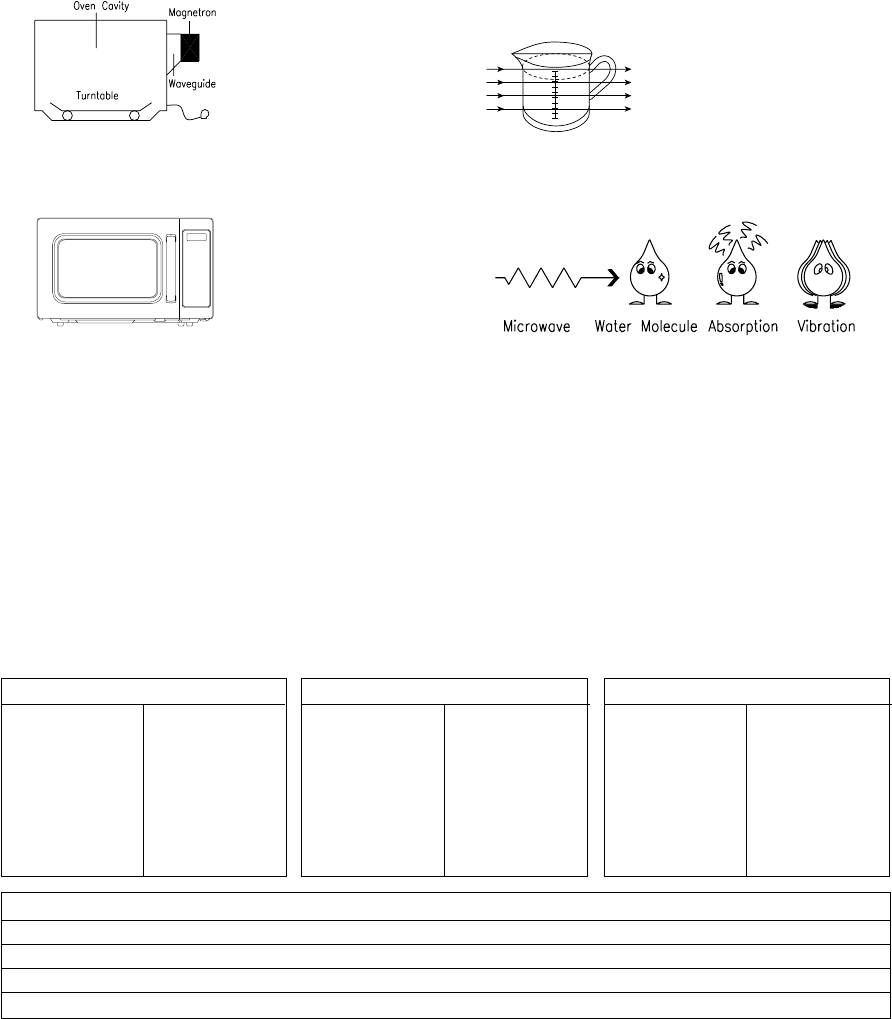
15
MICROWAVING PRINCIPLES
Microwave energy has been used in this country to cook and reheat food since early experiments with
RADAR in World War ll. Microwaves are present in the atmosphere all the time, both naturally and
manmade sources. Manmade sources include radar, radio, television, telecommunication links and car
CONVERSION CHARTS
In a microwave oven,
electricity is
converted into
microwave by the
MAGNETRON.
REFLECTION The microwaves
bounce off the metal
walls and the metal
door screen.
TRANSMISSION Then they pass through
the cooking containers to
be absorbed by the water
molecules in the food, all
foods contain water to a
more or lesser extent.
ABSORPTION
The microwaves cause the water molecules to
vibrate which causes FRICTION, i.e. HEAT. This
heat then cooks the food. Microwaves are also
attracted to fat and sugar particles, and foods high
in these will cook more quickly. Microwaves can
only penetrate to a depth of 11/2 - 2 inches(4-5cm)
and as heat spreads through the food by
conduction, just as in a traditional oven, the food
cooks from the outside inwards.
WEIGHT MEASURES
15 g 1/2oz.
25 g 1 oz.
50 g 2 oz.
100 g 4 oz.
175 g 6 oz.
225 g 8 oz.
450 g 1 lb.
HOW MICROWAVES COOK FOOD
▲
▲▲
VOLUME MEASURES
30 ml 1 fl.oz.
100 ml 3 fl.oz.
150 ml 5 fl.oz. (1/4 pt)
300 ml 10 fl.oz. (1/2 pt)
600 ml 20 fl.oz. (1pt)
SPOON MEASURES
1.25 ml 1/4tsp
2.5 ml 1/2tsp
5 ml 1 tsp
15 ml 1 tbsp
FLUID MEASUREMENTS
1 Cup = 8 fl.oz. = 240 ml
1 Pint = 16 fl.oz. (UK 20 fl.oz.) = 480 ml (UK 560 ml)
1 Quart = 32 fl.oz. (UK 40 fl.oz.) = 960 ml (UK 1120 ml)
1 Gallon = 128 fl.oz. (UK 160 fl.oz.) = 3840 ml (UK 4500 ml)
16
STANDING TIME
Dense foods e.g. meat, jacket potatoes and cakes,
require standing time(inside or outside of the oven)
after cooking, to allow heat to finish conducting to
cook the center completely. Wrap meat joints and
jacket potatoes in aluminium foil while standing.
Meat joints need approx. 10-15 minutes, jacket
potatoes 5 minutes. Other foods such as plated
meal, vegetables, fish etc require 2-5 minutes
standing. After defrosting food, standing time
should also be allowed. If food is not cooked after
standing time, return to the oven and cook for
additional time.
MOISTURE CONTENT
Many fresh foods e.g. vegetables and fruit, vary in
their moisture content throughout the season,
particularly jacket potatoes. For this reason cooking
times may have to be adjusted. Dry ingredients e.g.
rice, pasta, can dry out during storage so cooking
times may differ.
DENSITY
Porous airy foods heat more quickly than dense
heavy foods.
CLING FILM
Cling film helps keep the food moist and the
trapped steam assists in speeding up cooking
times. Pierce before cooking to allow excess steam
to escape. Always take care when removing cling
film from a dish as the build-up of steam will be
very hot.
SHAPE
Even shapes cook evenly. Food cooks better by
microwave when in a round container rather than
square.
SPACING
Foods cook more quickly and evenly if spaced
apart. NEVER pile foods on top of each other.
STARTING TEMPERATURE
The colder the food, the longer it takes to heat up.
Food from a fridge takes longer to reheat than food
at room temperature.
LIQUIDS
All liquids must be stirred before and during
heating. Water especially must be stirred before
and during heating, to avoid eruption. Do not heat
liquids that have previously been boiled. DO NOT
OVERHEAT.
TURNING & STIRRING
Some foods require stirring during cooking. Meat
and poultry should be turned after half the cooking
time.
ARRANGING
Individual foods e.g. chicken portions or chops,
should be placed on a dish so that the thicker parts
are towards the outside.
QUANTITY
Small quantities cook faster than large quantities,
also small meals will reheat more quickly than large
portions.
PIERCING
The skin or membrane on some foods will cause
steam to build up during cooking. These foods
must be pierced or a strip of skin should be peeled
off before cooking to allow the steam to escape.
Eggs, potatoes, apples, sausages etc, will all need
to be pierced before cooking. DO NOT ATTEMPT
TO BOIL EGGS IN THEIR SHELLS.
COVERING
Cover foods with microwave cling film or a lid.
Cover fish, vegetables, casseroles, soups. Do not
cover cakes, sauces, jacket potatoes or pastry
items.
COOKING TECHNIQUES
17
DEFROSTING GUIDE
GENERAL INFORMATION
➪Put the food on a microwave rack (roasts, bone-in pieces) or in a microwave casserole (small pieces
such as cubes or strips) or weigh at home on a kitchen scale. Round number to the nearest tenth of a
pound and choose that number with each item pads.
➪The shape of food items, especially larger ones, will vary affect the way defrost. Always check the status
after the standing time. Fish, seafood and poultry should still be somewhat icy in the center the held
under cold running water to finish defrosting. If more time is needed, use DEFROST by time to add time
in small increments.
➪Halfway through the defrosting process, a series of beeps will indicate that it is time to change the
position of the item being defrosted. The includes turning over or rotating the item, separating defrosted
pieces or sections, or shielding.
➪Shielding means to use a 2-inch strip of aluminum foil to protect thinner or unevenly shaped part from
beginning to cook. Microwave energy will not penetrate the foil. Some rules apply to the use of foil:
Do not let the foil pieces touch each other or the sides of the microwave oven.
Be sure that all ends are touched under and lie flat to the food.
Remember to adjust foil when a item is turned over and cover with wax paper.
➪To prepare food for freezer storage(and later defrosting), wrap tightly in moisture proof packaging. If
using freezer plastic bags, be sure to let all the air out to prevent freezer bump on the food. Package so
that food is as evenly shaped as possible ease in defrosting
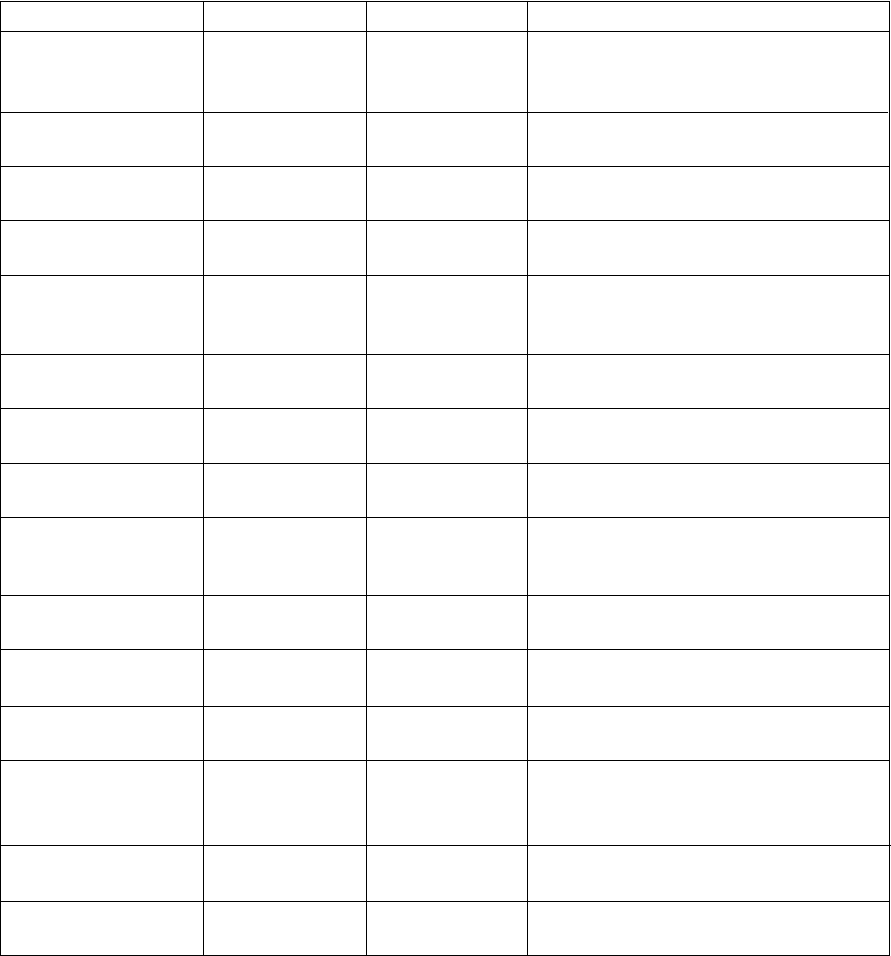
18
DEFROSTING CHART
Item and Weight
BEEF
Mineed beef
454g (1 lb.)
Stew Meat
681 (11/2 lbs.)
Loin Roast
907g (2 lbs.)
Patties
4 (113g (4 oz.))
PORK
Loin Roast
907g (2 lbs.)
Spareibs
454g (1 lb.)
Chops
4 (142g (5 oz.))
Minced
454g (1 lb.)
POULTRY
Whole Chicken
1134g (21/2 lbs.)
Chicken Breasts
454g (1 lb.)
Fryer Chicken
(cut up) 907g (2 lbs.)
Chicken Thighs
681g (11/2 lbs.)
FISH & SEAFOOD
Whole Fish
454g (1 lb.)
Fish Fillets
681g (11/2 lb.)
Shrimp
227g (1/2 lb.)
* The times are approximate because freezer temperatures vary.
Special Techniques
Break apart and remove thawed
portions with fork.
Separate and rearrange once.
Turn over after half the time.
Shield as needed.
Turn over after half the time.
Turn over after half the time.
Shield as needed.
Turn over after half the time.
Shield as needed.
Separate and rearrange once.
Separate and turn over once.
Break apart and remove thawed
portions with fork.
Breat side down. Turn over after half
the time.
Shield as needed.
Separate and rearrange once.
Separate and rearrange once.
Separate and rearrange once.
Separate and turn over once.
Separate and rearrange once.
Defrosting Time
5-7 min.
6-8 min.
10-12 min.
2-4 min.
8-10 min.
3-5 min.
3-5 min.
4-6 min.
10-14 min.
5-7 min.
7-9 min.
6-10 min.
2-3 min.
3-4 min.
1-2 min.
Standing Time
5-7 min.
5-7 min.
5-7 min.
5-7 min.
7-10 min.
5-7 min.
5-7 min.
5-7 min.
10-15 min.
5-7 min.
5-7 min.
5-7 min.
5-7 min.
5-7 min.
5-7 min.
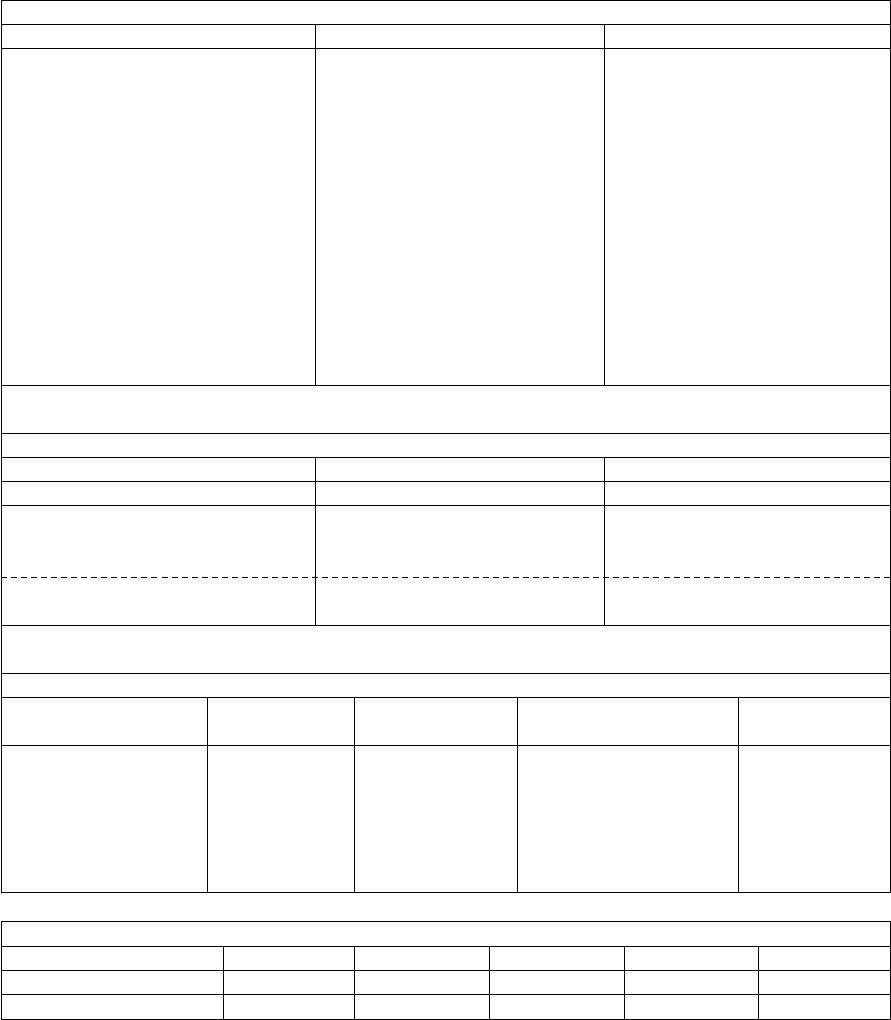
19
COOKING CHART
MEAT ITEM POWER LEVEL COOKING TIMER PER POUND
Beef
Standing/rolled Rib - Rare P-80 5-7 min.
- Medium P-80 6-8 min.
- well done P-80 7-9 min.
Ground Beef(to brown for casserole) P-HI 4-6 min.
Hamburgers, Fresh or defrosted
(4 oz. Each) 2 patties P-HI 1-2 min.
4 patties P-HI 2-3 min.
Pork
Loin, Leg P-80 8-10 min.
Bacon 4 slices P-HI 1-2 min.
6 slices P-HI 2-3 min.
NOTE: The above times should be regarded only as a guide. Allow for difference in individual tastes
and preferences. The times may vary due to the shape, cut, and composition of the meat.
POULTRY ITEM POWER LEVEL COOKING TIMER PER POUND
Chicken
Whole P-HI 5-7 min.
Breast(boned) P-80 3-5 min.
portions P-80 4-6 min.
Turkey
Whole P-HI 7-10 min.
NOTE: The above times should be regarded only as a guide. Allow for difference in individual tastes
and preferences. The times may vary due to the shape and composition of the food.
FRESH FISH
VEGETABLE
ITEM POWER COOKING TIME METHOD STANDING
LEVEL PER POUND TIME
Fish Fillets P-HI 2-3 min. Add 15-30 ml(1-2 Tbsp) 2-3 min.
Whole Mackerel, P-HI 2-3 min. - 3-4 min.
Cleaned and Prepared
Whole Trout, Cleaned P-HI 3-5 min. - 3-4 min.
and Prepared
Salmon Steaks P-HI 3-5 min. Add 15~30 ml(1~2 Tbsp) 3-4 min.
ITEM POWER LEVEL PREPARATION QUANTITY COOKING TIME
STANDING TIME
Artichokes, fresh P-HI Whole 4(8 oz. each) 5-7 min. 5 min.
Artichokes, frozen P-HI Hearts 250g(9 oz. pkg) 6-8 min. 5 min.
Check time per 1lb. in chart below and multiply by the weight of the item.
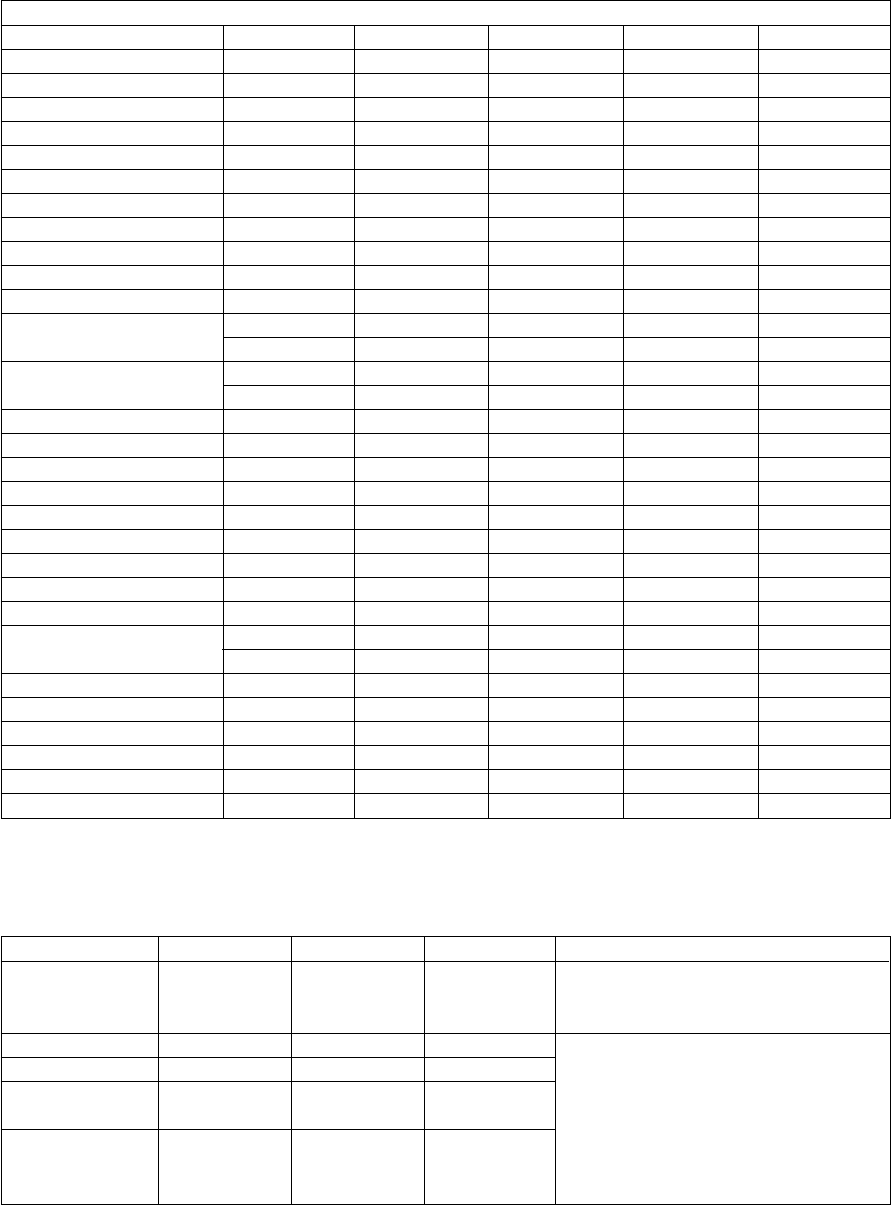
20
VEGETABLE
ITEM POWER LEVEL PREPARATION QUANTITY COOKING TIME
STANDING TIME
Asparagus, fresh P-HI 11/2-in.pieces 500g(1 lb.) 3-5 min. 3 min.
Asparagus, frozen P-HI Whole spears 280g(10 oz. pkg) 5-7 min. 3 min.
Broccoli, fresh P-HI Spears 500g(1 lb.) 3-5 min. -
Broccoli, frozen P-HI Whole or cut 280g(10 oz. pkg) 5-7 min. 3 min.
Brussels sprouts, fresh P-HI Whole 280g(10 oz. tub) 3-5 min. -
Brussels sprouts, frozen P-HI Whole 280g(10 oz. pkg) 5-7 min. 3 min.
Carrots, fresh P-HI 1/2-in.slices 500g(1 lb.) 4-6 min. 3 min.
Carrots, frozen P-HI Sliced 280g(10 oz. pkg) 3-4 min. 3 min.
Cauliflower, frozen P-HI florets 280g(10 oz. pkg) 3-4 min. 3 min.
Celery, fresh P-HI 1/2-in.slices 500g(1 lb.) 3-5 min. 5 min.
Corn, fresh P-HI on cob, husked 4 ears 5-7 min. 5 min.
Corn, frozen P-HI on cob, husked 4 ears 5-7 min. 5 min.
P-HI whole kernel 280g(10 oz. pkg) 4-6 min. 3 min.
Eggplant, fresh P-HI cubed 500g(1 lb.) 3-5 min. 3 min.
P-HI whole, pierced
500~700g(1-11/2lb.)
4-6 min. 5 min.
Leeks fresh P-HI whole, ends 500g(1 lb.) 4-6 min. 5 min.
Lima beans, frozen P-HI whole 280g(10 oz. pkg) 4-6 min. 3 min.
Mixed vegetables frozen P-HI - 280g(10 oz. pkg) 4-6 min. 3 min.
Mushrooms, fresh P-HI sliced 500g(1 lb.) 2-3 min. 3 min.
Okra, frozen P-HI sliced 280g(10 oz. pkg) 4-6 min. 5 min.
Onions, fresh P-HI whole, peeled 8-10 small 5-7 min. 5 min.
Pea pods(snow peas), frozen P-HI whole 170g(6 oz. pkg) 2-3 min. 3 min.
Peas and carrots P-HI - 280g(10 oz. pkg) 2-3 min. 3 min.
Parsnips, fresh P-HI cubed 500g(1 lb.) 4-6 min. 5 min.
Potatoes, white or sweet, P-HI whole 4(6 oz. eash) 15-17 min. 3 min.
fresh P-HI whole 8(6 oz. eash) 18-20 min. 5 min.
Squash, summer, fresh P-HI 1/2-in.slices 500g(1 lb.) 3-5 min. 3 min.
Squash, summer, frozen P-HI sliced 280g(10 oz. pkg) 3-5 min. 3 min.
Squash, winter, fresh P-HI whole, pierced 700g(11/2lbs.) 6-8 min. 5 min.
Squash, winter, frozen P-HI whipped 340g(12 oz. pkg) 4-6 min. 3 min.
Succotash, frozen P-HI - 280g(10 oz. pkg) 3-5 min. 3 min.
Turnips P-HI cubed 4 cups 4-6 min. 3 min.
ITEM QUANTITY POWER LEVEL COOKING TIME SPECIAL INSTRUCTION
Appetizers
(bite size) 2 servings P-HI 1-2 min.
Breakfast entrée 110~140g(4-5 oz.) P-HI 1-2 min.
Entrée 250g(8-9 oz.) P-HI 6-8 min.
Regular TV-style 600g(21 oz.) P-HI 10-12 min.
dinner
Hearty TV-style 300g(11 oz.) P-HI 4-6 min.
dinner 480g(17 oz.) P-HI 5-8 min.
Heat 12 at time on paper towel lined
paper plate or microwave oven
roasting rack
If containers is 3/4-inch deep, remove
foil cover and replace foil tray in
original box.
For containers more then 3/4-inch
deep, remove food to similar size glass
container; heat, covered. If no top crust
stir occasionally.
REHEATING CHART
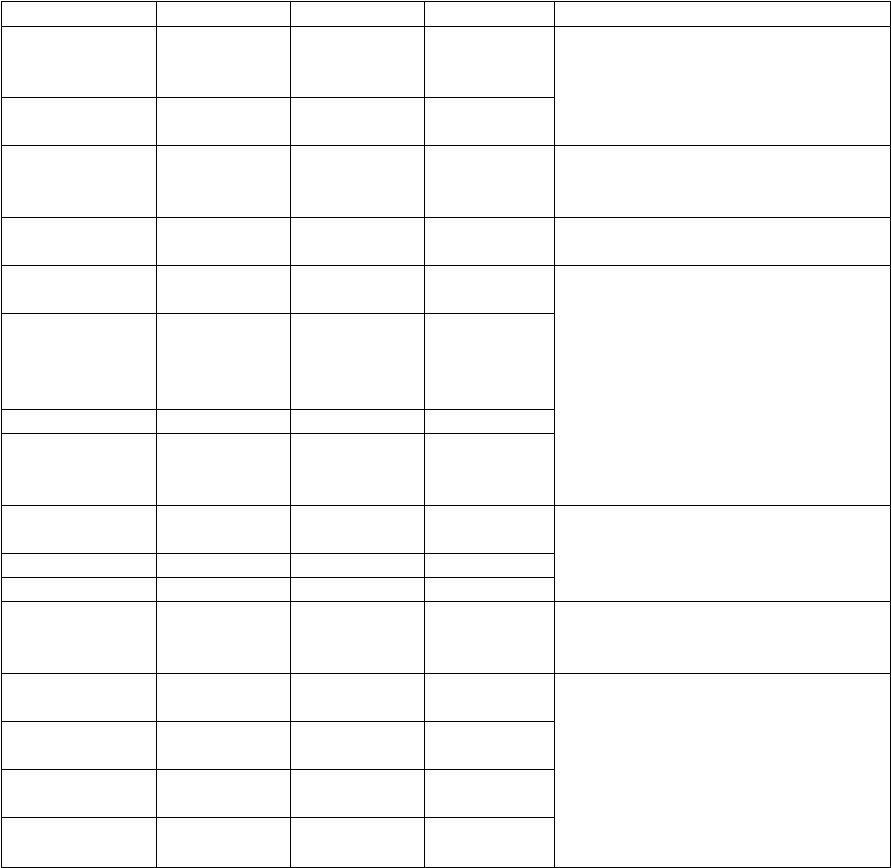
21
ITEM QUANTITY POWER LEVEL COOKING TIME SPECIAL INSTRUCTION
2 pieces P-HI 1-2 min.
Fried chicken 4 pieces P-HI 2-4 min.
6 pieces P-HI 3-5 min.
Fried fresh fillets 2 fillets P-HI 1-2 min.
4 fillets P-HI 2-4 min.
1 P-HI 1-2 min.
Pizzas (sliced) 2 P-HI 2-3 min.
4 P-HI 3-6 min.
Pouch dinners
140~160g(5-6 oz.)
P-HI 2-3 min.
280~300g(10-11 oz.)
P-HI 5-7 min.
Bagels 2 P-60 1-2 min.
4 P-60 2-4 min.
1 P-60 1/2-1 min.
Danish 2 P-60 1-2 min.
4(6 oz. pkg) P-60 2-3 min.
6(13 oz. pkg) P-60 3-4 min.
Dinner rolls 6 P-60 1-2 min.
1(1-11/4oz.) P-60 1/2-1 min.
Hard rolls 2 P-60 1-2 min.
4 P-60 2-3 min.
Frozen Juice 170g(6 oz.) P-HI 1-2 min.
Concentrates 340g(12 oz.) P-HI 2-3 min.
Non-Dairy creamer 450g(16 oz.) P-60 6-8 min.
Pancake 280g(10 oz.) P-60 3-5 min.
160g(6 oz.) P-60 5-7 min.
Frozen vegetables 280g(10 oz.) P-60 6-10 min.
Cheese cake 500g(17 oz.) P-60 3-4 min.
Brownies 360g(13 oz.) P-60 1-3 min.
Pound cake 300g(103/4oz.) P-60 1-2 min.
Coffee cake
300~340g(11-12 oz.)
P-60 2-3 min.
Arrange, on paper tower lined paper
plate, covered with paper tower.
Arrange on microwave oven roasting
rack.
Pierce pouch. Set on plate. Turn over
halfway through cooking.
Each individually wrapped in paper
toweling (for1-2) or arrange on paper
plate, cover with paper toweling.
Remove lid. If container is foil lined
transfer to a pitcher or open carton.
Let stand after defrosting.
Pierce box, set on plate. If box is foil
wrapped, remove foil. If vegetables are in
pouch, pierce pouch. Let stand 5 min.
Remove from original container. Arrange
on a serving plate. Let stadn 5 minutes
after cooking(to defrost). Add an additional
1-2 minutes to serve warm.

22
CARE OF YOUR MICROWAVE OVEN
Turn the oven off before cleaning.
Keep the inside of the oven clean. When food spatters or spilled liquids adhere to oven walls, plate tray, stirrer
cover and inlet cover wipe with a damp cloth. Mild detergent may be used if the oven gets very dirty. The use of
harsh detergent or abrasives is not recommended.
The outside oven surface should be cleaned with soap and water, rinsed and dried with a soft cloth. To prevent
damage to the operating parts inside the oven, water should not be allowed to seep into the ventilation openings.
If the Control Panel becomes wet, clean with a soft, dry cloth. Do not use harsh detergents or abrasives on Control
Panel.
If steam accumulates inside or around the outside of the oven door, wipe with a soft cloth. This may occur when
the microwave oven is operated under high humidity conditions and in no way indicates malfunction of the unit.
1
2
3
4
5
IMPORTANT CAUTIONS
1. Do not operate after removed food.
2. Do not operate the oven without stirrer cover in place.
3. Do not remove the stirrer cover and plate tray.

23
USE YOUR MICROWAVE OVEN SAFELY
General Use
Do not attempt to defeat or tamper with safety interlocks.
Do not place any object between the oven front frame and the door or allow residue to build up on sealing
surfaces. Wipe with a mild detergent, rinse and dry. Never use abrasive powders or pads.
Do not subject the oven door to strain or weight such as a child hanging on an open door.
This could cause the oven to fall forward resulting in injury to you and damage to the oven.
Do not operate the oven if door seals or sealing surfaces are damaged; or if door is bent; or if hinges are loose
or broken.
Do not operate the oven empty. This will damage the oven.
Do not attempt to dry clothes, newspapers or other materials in the oven. They may catch on fire.
Do not use recycled paper products as they may contain impurities which may cause sparks or fires.
Do not hit or strike the control panel with hard objects. This can damage the oven.
Food
Never use your microwave oven for home canning. The oven is not designed for proper home canning.
Improperly canned food may spoil and be dangerous to consume.
Always use the minimum recipe cooking time. It is better to undercook rather than overcook foods.
Undercooked foods can be returned to the oven for more cooking. If food is overcooked, nothing can be done.
Heat small quantities of food or foods with low moisture carefully. These can quickly dry out, burn or catch on fire.
Do not heat eggs in the shell. Pressure may build up and eggs can explode.
Potatoes, apples, egg yolks and sausages are examples of food with non-porous skins.
These must be pierced before cooking to prevent bursting.
Do not attempt to deep fat fry in your microwave oven.
Always stir liquids before heating. Heated liquids can erupt, if not mixed with air.
Do not leave the oven unattended while popping corn.
Do not pop corn in a paper bag unless it is the commercially prepared Microwave Popcorn product. The kernels
can overheat and ignite a brown paper bag.
Do not put packaged Microwave Popcorn bags directly on the oven tray. Place the package on a microwave
safe glass or ceramic plate to avoid overheating and cracking the oven tray.
Do not exceed the Microwave Popcorn manufacturers' suggested popping time. Longer popping does not yield
more popcorn but it can result in scorch, burn of fire. Remember, the Popcorn bag and tray can be too hot to
handle. Remove with caution and use pot holders.
ARCING
If you see arcing, open the door and correct the problem.
Arcing is the microwave term for sparks in the oven.
Arcing is caused by:
• Metal or foil touching the side of the oven.
• Foil not molded to food (upturned edges act like antennas).
• Metal, such as twist-ties, poultry pins, or gold rimmed dishes, in the microwave.
• Recycled paper towels containing small metal pieces being used in the microwave.

24
BEFORE YOU CALL FOR SERVICE
Refer to following checklist, you may prevent an unnecessary service call.
* The oven doesn't work;
1. Check that the power cord is securely plugged in.
2. Check that the door firmly closed.
3. Check that the cooking time is set.
4. Check for a blown circuit fuse or tripped main circuit breaker in your house.
* Sparking in the cavity;
1. Check that utensils are metal containers or dishes with metal trim.
2. Check that metal skewers touch the interior walls.
If there is still a problem, contact the service station.
A list of these stations is included in the oven.
QUESTIONS AND ANSWERS
* Q : I accidentally ran my microwave oven without any food in it. Is it damaged?
* A : Running the oven empty for a short time will not damage the oven.
However, it is not recommended.
* Q :Can the oven be used with the glass tray or roller guide removed?
* A : No. Both the glass tray and roller guide must always be used in the oven before cooking.
* Q : Can I open the door when the oven is operating?
* A :
The door can be opened anytime during the cooking operation. Then microwave energy will be instantly
switched off and the time setting will maintain until the door is closed and START is touched.
* Q : Why do I have moisture in my microwave oven after cooking?
* A : The moisture on the side of your microwave oven is normal. It is caused by steam form cooking food
heating the cool oven surface.
* Q : Dose microwave energy pass through the viewing screen in the door?
* A : No. The metal screen bounces back the energy to the oven cavity. The holes are made to
allow light to pass through. They do not let microwave energy pass through.
* Q : Why do eggs sometimes pop?
* A : When baking or poaching eggs, the yolk may pop due to steam build-up inside the yolk membrane.
To prevent this, simply pierce the yolk with a toothpick before cooking. Never cook eggs without
piercing their shells.
DO NOT ATTEMPT TO SERVICE THE OVEN YOURSELF!
25
QUESTIONS AND ANSWERS (continued)
* Q : Why is standing time recommended after the cooking operation has been completed?
* A : Standing time is very important.
With microwave cooking, the heat is in the food, not in the oven. Many foods build up enough internal
heat to allow the cooking process to continue, even after the food is removed from the oven. Standing
time for joints of meat, large vegetables and cakes allows the inside to cook completely, without
overcooking the outside.
* Q : What does “standing time” mean?
* A : “Standing time” means that food should be removed from the oven and covered for additional time to
allow it to finish cooking. This frees the oven for other cooking.
* Q : Why does my oven not always cook as fast as the microwave cooking guide says?
* A : Check your cooking guide again, to make sure you’ve followed directions exactly ; and to see what
might cause variations in cooking time. Cooking guide times and heat settings are suggestions, to
help prevent over-cooking... the most common problem in getting used to a microwave oven.
Variations in the size, shape and weights and dimensions could require longer cooking time. Use your
own judgement along with the cooking guide suggestions to check whether the food has been
properly cooked just as you would do with a conventional cooker.
* Q : Will the microwave oven be damaged if it operates while empty?
* A : Yes. Never run it empty.
* Q : Can I pop popcorn in my microwave oven? How do I get the best results?
* A : Yes. Pop packaged microwave popcorn following manufactures guidelines or use the preset
POPCORN pad. Do not use regular paper bags. Use the “listening test” by stopping the oven as soon
as the popping slows to a “pop” every 1 or 2 seconds. Do not repop unpopped kernels. Do not pop
popcorn in glass cookware.

26
Warranty Application
New, unused Turbo Air Commercial microwave ovens purchased in the United States of America are warranted
against manufacturing defects in materials and workmanship as follows:
Warranty Period
1. Magnetron Tube - For 2 years from the date of purchase.
2. Other Parts - For 1 years from the date of purchase.
3. Accessories (Namely Plate Tray, Lost or Broken Air Filters, Light Bulbs) - No Warranty.
Turbo Air’s Responsibility
During the warranty period, Turbo Air, will repair, or at its option, replace Microwave Oven with a new or
refurbished one, which shows evidence of a manufacturing defect in materials or workmanship, which will be
determined by Turbo Air.
What is not covered.
1. Microwave oven purchased in a used condition.
2. Problems due to product set-up and installation.
3. Adjustments that are outlined in the Operating Manual.
4. Accessory items including Plate Tray, Lost or Broken Air Filters, Light Bulbs.
5. Damage to or failure of Microwave oven due to any misuse, abuse, negligence, accident, shipping
damage, or improper power supply voltages.
6. Damage to or failure of Microwave Oven due to unsanitary conditions.
7. Alteration, change, modification or repair made on the Microwave Oven by any party other than Turbo
Air’s authorized service representatives.
Original Commercial Purchaser’s Responsibility
The Original purchaser must call Turbo Air Warranty Department (800-627-0032)
1. To get a Return Goods Authorization Number.
2. Must provide an original, dated proof of purchase.
3. Provide a detailed description of the problem. Must be legible (Typed or Print)
4. Unit MUST BE CLEAN! If unit is shipped without being cleaned, a cleaning fee of $25.00 will be
assessed.
5. Freight of unit to Turbo Air must be Pre-Paid by End-user.
6. Original purchaser is responsible for the cost of any MAINTAINCE (other than warranty repair)
necessary on the Microwave Oven.
Warranty becomes VOID
This warranty becomes void if the product’s serial number is altered or removed in any way or if any repair to
the product is made by other than Turbo Air.
Limitations
Turbo Air reserves the right to change or improve the design of the model of the product warranted hereunder
without incurring any obligation to make any modifications to or to install any improvements in or on the
product. In no event shall Turbo Air be linble for special or consequential damage arising from the use of this
product.
Statutory Warranties
The above provisions do not preclude the operation of any applicable provincial statute which in certain
circumstances may not allow some of the limitation and exclusions described in this warranty. Where any terms
of the Warranty are prohibited by such a statute, they shall be deemed null and void but the remainder of this
warranty shall remain in effect.